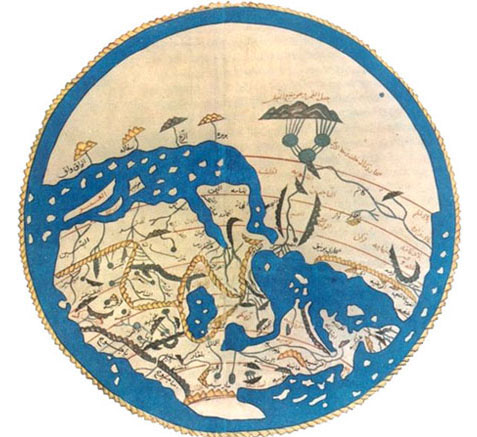Article of the Month - January 2022
“Hamid’s Travelogue: Mimetic Transformations and Spiritual Connectivities Across Mediterranean Topographies of Grace”
(Martin Zillinger: Social and Cultural Anthropology, University of Cologne)
Zillinger, Martin, “Hamid’s Travelogue: Mimetic Transformations and Spiritual Connectivities Across Mediterranean Topographies of Grace.” Zeitschrift für Ethnologie 145 (2020): 237-254.
Article Abstract:
In their seminal work that helped to re-invent Mediterranean anthropology some 20 years ago, Horden and Purcell argue that the religious landscape reflects both, the fragmented topography of Mediterranean micro-regions and the means by which the fragmentation is overcome. In order to explore how space and time concern the divine along and across Mediterranean shores, this paper examines how social and spiritual borders are crossed in religious practice and graduated socialities are generated, shaped and negotiated. It argues that connectivities, lateral and vertical, are forged or undone by turning borders into thresholds and vice-versa. Drawing from both, the history of Mediterranean anthropology of religion and ethnographic material from transnational mobile members of trance networks the paper sketches an anthropology of blessing across nested fields of exteriority and alterity, found within and without the social niches of Mediterranean lifeworlds.
Keywords: Anthropology of the Mediterranean, grace, blessing, spirit possession, trance mediums, publics, mobility, space, the sacred, connectivity, migration, media, Durkheim, Czarnowski, The Corrupting Sea
Nomination Statement:
Although there are many potential pitfalls in interpreting present day anthropological research as a guide to practices in the remote past Martin Zillinger’s “Hamid’s Travelogue” constitutes an original and thought-provoking engagement with Horden and Purcell’s connected Mediterranean vis-à-vis inter-communal relations, and especially with its emphasis on the mystical unorthodox modes of piety that have always been so important but have largely been ignored (deliberately or not) in the sorts of sources that come down to us from the distant past.
Author’s Comment:
In my earlier work on Trance Mediums and New Media I have focused on how ritual spaces are scaled up and down in and through the media practices by members of the ‘Isāwa and Ḥamadša, two popular Sufi paths (ṭurūq) in Morocco. In particular, I was interested on how the publicness of trance is re-negotiated when digital media are used and shape rituals of spirit possession. I elaborated a notion of “graduated publics” to explore the modalities of circulation and uptake that expand or delimit the publicness of trance in times of social media (see Zillinger 2017).
In this article, I drew upon my interest on mediation as a situated practice, which connects and divides Mediterranean religious spaces. Accompanying members of the Sufi confraternities on their undocumented ways into Europe pushed me to think about mobility and the sacralization of space. In “The Corrupting Sea” Horden and Purcell had argued that, in the history of the Mediterranean, the religious landscape reflects both: the fragmented topography of Mediterranean micro-regions and the means by which the fragmentation is overcome. The work of the largely forgotten Durkheimian Stefan Czarnowski helped me to move beyond binary conceptualizations of space and the sacred (see Zillinger 2022). The focal point of his relational notion of space is the distinction of a “centralized sacred” from a “free sacred”– of what he calls sacré concentré, manifest in all its efficacy and relevance at the centre of a social space, from what he calls sacré libre at the other side of the social and religious border. But the relation between these outer and inner spaces is one of exchange: Borders turn into pathways along which sacred powers travel. If central sacred sites and the sacred powers they territorialize are the “cognitive foundation on which mobility rests” (Horden and Purcell) the religious experts who traveled them are the moving mediums, who master and thereby connect all these sites, turning, as it were, borders into thresholds.
Traveling with a powerful religious expert across Mediterranean territories of grace I revisited the classic anthropological theories of liminality and explored the skills of mediumship (Muscari et al. 2022) to produce sacred centrality on the move. What the classic Victor Turner described as markers of liminality – such as travesty, traveling to “centers out there”, patienthood and the capacity to transform, as well as status reversal – can also become its source: Mimetic transformations thus produce spiritual connectivities across religious and social spaces.
I like to see this article as a stepping stone to elaborate an anthropology of blessing across religious formations that are usually kept apart in the scholarship of religion. The distinction of the Mediterranean Seminar encourages me to pursue this Mediterranean issue further.
References:
Muscari, Marcello, Voss, Ehler, Zillinger, Martin (Hg.) 2022: Transcending Worlds. Skill and Scale in Transnational Mediumship, Stuttgart: Metzler, accepted.
Zillinger, Martin 2022: Thinking about space by starting from its limits. Czarnowski on the Rhythm of Space, in J.Schick, M. Schmidt, M. Zillinger 2022. On the Social Origins of Thought: Durkheim, Mauss and the Category Project, Oxford: Berghahn, in press.
Zillinger, Martin 2017: Graduated Publics. Mediating Trance in the Age of Technical Reproduction, in: Current Anthropology Vol. 58, S14, Special Issue “New Media, New Publics?, p.41-S55
Would you like to discuss this article?
Start a thread on the Mediterranean Seminar list-server
See the other Articles of the Month here.
